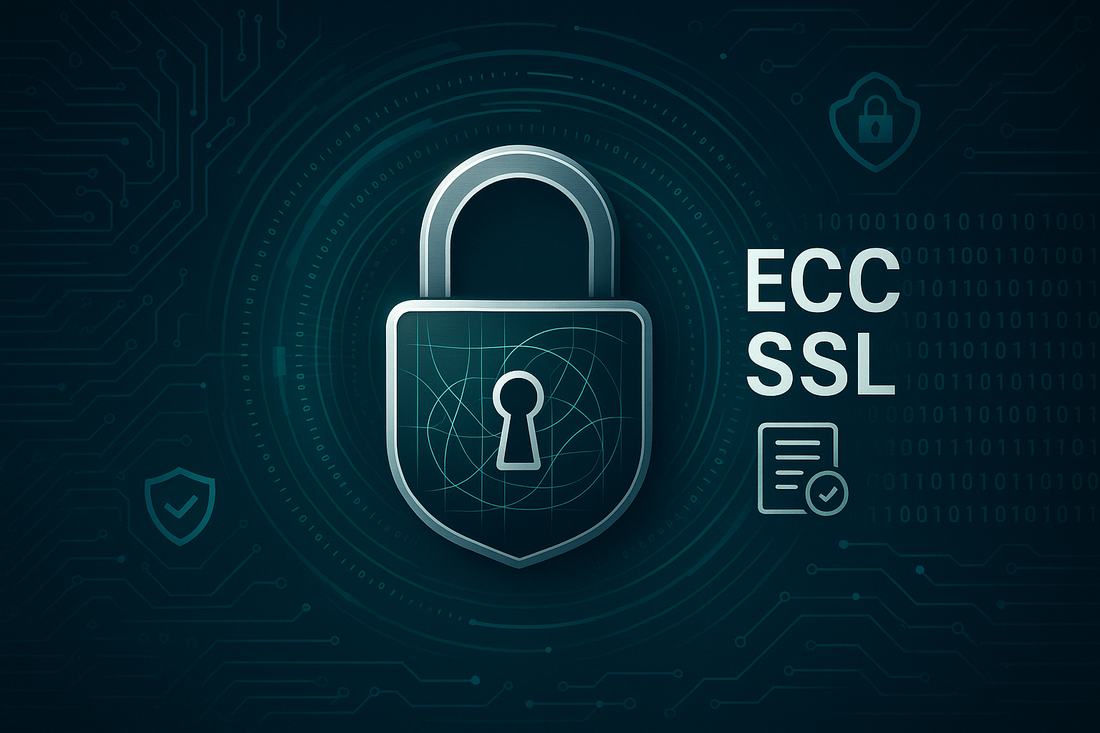
Elliptic Curve Cryptography (ECC)
Marcus KennedyShare
Elliptic Curve Cryptography (ECC) represents one of the most significant advances in public key cryptography in recent decades.
This sophisticated mathematical approach provides the same level of security as traditional RSA encryption while using significantly shorter key lengths.
For organizations implementing SSL Certificates, understanding ECC is crucial as it directly impacts security strength, performance, and resource utilization across digital systems.
Understanding Elliptic Curve Cryptography Fundamentals
ECC bases its security on the elliptic curve discrete logarithm problem, which makes it computationally infeasible to determine the private key even when the public key is known.
Unlike RSA, which relies on the factorization of large prime numbers, ECC leverages the mathematical properties of elliptic curves to create cryptographic keys.
This fundamental difference enables ECC-based SSL Certificates to deliver superior security with smaller key sizes.
The Mathematics Behind ECC
An elliptic curve in cryptography consists of a set of points satisfying a specific mathematical equation.
The curve exists over a finite field, creating a structure that enables secure key generation and exchange.
The mathematical complexity involves points on the curve being combined through a process called point multiplication, where a point P is multiplied by a number k to obtain another point Q on the curve.
ECC Implementation in SSL Certificates
Modern SSL Certificates increasingly support ECC algorithms alongside traditional RSA. When implementing ECC-based SSL Certificates, organizations benefit from reduced computational requirements and faster processing times.
A 256-bit ECC key provides equivalent security to a 3072-bit RSA key, demonstrating the significant efficiency advantages of elliptic curve cryptography.
Key Size Comparisons
The efficiency of ECC becomes evident when comparing key sizes. A 384-bit ECC key offers security equivalent to a 7680-bit RSA key.
This dramatic reduction in key size translates to lower bandwidth requirements, faster SSL Certificate validation, and improved server performance.
For mobile devices and IoT applications, these benefits become particularly significant.
Practical Applications and Benefits
Organizations implementing ECC-based SSL Certificates experience multiple advantages. Server load decreases due to lighter computational requirements.
SSL Certificate handshakes complete faster, improving website loading times and user experience.
Mobile devices benefit from reduced battery consumption when processing ECC-based cryptographic operations.
Performance Considerations
When deploying ECC-based SSL Certificates, servers typically use less memory and CPU resources compared to RSA implementations.
This efficiency becomes particularly important in high-traffic environments where thousands of SSL Certificate handshakes occur simultaneously.
Organizations operating large-scale web services often see significant cost savings in infrastructure requirements.
Security Implications and Standards
ECC maintains robust security standards recognized by major security organizations worldwide.
The National Institute of Standards and Technology (NIST) recommends ECC for federal government use, and many industry standards incorporate ECC-based cryptography.
Trustico® SSL Certificates utilizing ECC provide compliance with current security requirements while preparing organizations for future cryptographic needs.
Future-Proofing Security
As quantum computing advances, the cryptographic landscape continues to evolve.
ECC provides an important advantage in this context, as its mathematical structure offers better resistance to quantum attacks compared to traditional RSA-based systems
Organizations implementing ECC-based SSL Certificates position themselves well for future security challenges.
Implementation Considerations
When deploying ECC-based SSL Certificates, organizations should consider browser compatibility and legacy system support.
While modern browsers fully support ECC, some older systems may require fallback options.
Trustico® provides comprehensive compatibility information for all SSL Certificate products, ensuring smooth implementation across diverse environments.
Best Practices for Deployment
Successful ECC implementation requires careful planning and execution. Organizations should audit their existing systems for ECC compatibility, prepare fallback mechanisms where necessary, and develop a clear migration strategy.
Regular security assessments help ensure optimal configuration of ECC-based SSL Certificates.
Troubleshooting Common Issues
During ECC-based SSL Certificate implementation, organizations might encounter specific challenges.
Common issues include SSL Certificate chain validation errors, compatibility problems with legacy systems, and configuration mismatches.
Understanding these potential problems helps ensure smooth deployment and operation of ECC-based security solutions.
Conclusion
Elliptic Curve Cryptography represents a significant advancement in SSL Certificate technology, offering superior security with improved efficiency.
Organizations implementing ECC-based SSL Certificates benefit from reduced resource requirements, faster performance, and robust security standards.
As the digital security landscape evolves, ECC continues to provide a strong foundation for protecting sensitive data and securing digital communications.
Trustico® offers a comprehensive range of SSL Certificates supporting ECC, enabling organizations to implement modern cryptographic solutions while maintaining compatibility with existing systems.



